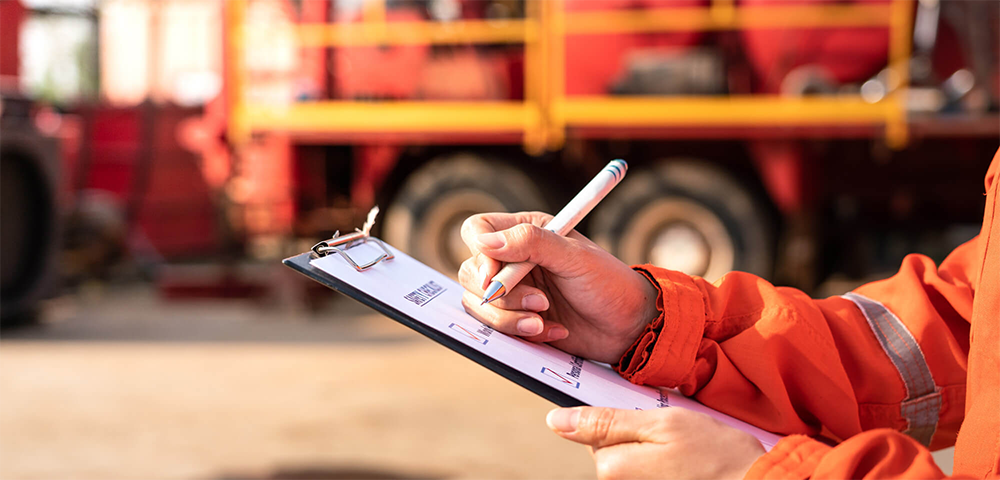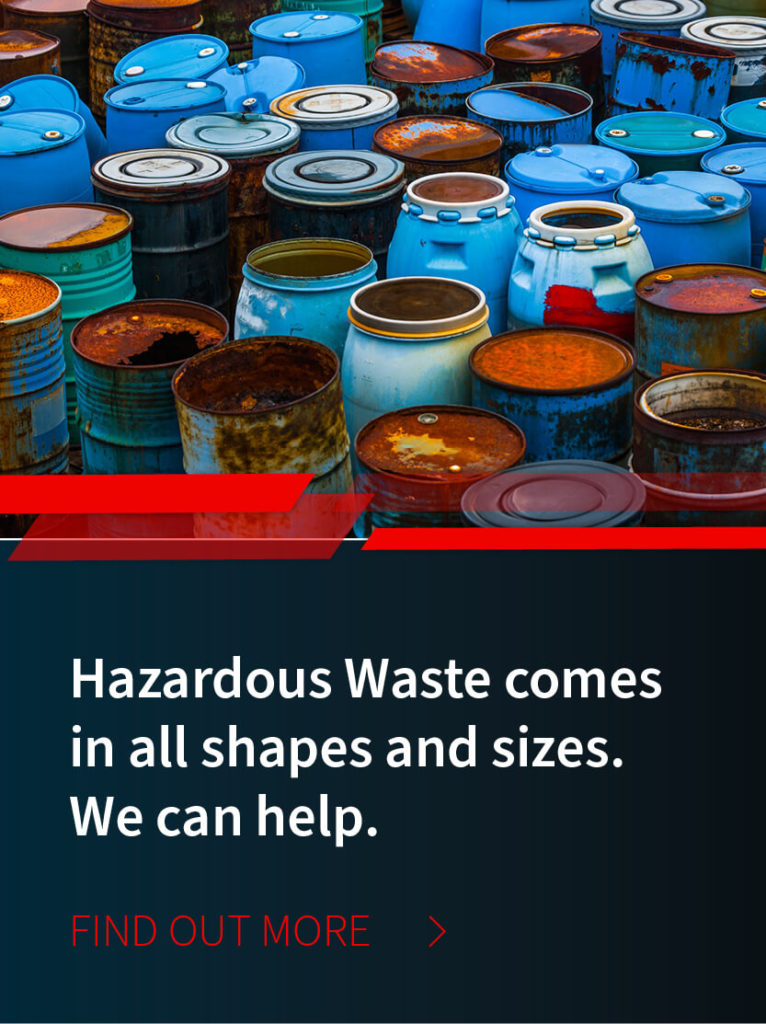
/ IN THIS BLOG
One of the most important aspects of handling, transporting, and properly disposing of hazardous waste is obviously safety. Preparation for potential emergencies needs to be in place in case something unexpected happens during transport, especially in regard to hazardous waste. One such security measure is the inclusion of emergency response numbers on the hazardous waste manifest.
Lacking a number or improperly providing a number not only poses a health and safety risk to transporters, but also makes the waste generator and transporter liable to consequences for federal no-compliance.
01 / Emergency Response Numbers and Hazardous Waste Manifests
According to federal laws, a hazardous waste manifest must accompany any transport of hazardous waste from one point to another. The Environmental Protection Agency (EPA) requires this and so too do state governmental agencies. This facilitates tracking of hazardous waste from its point of origin (the generator) to its final destination where it is stored, treated or disposed of.
Rules for the hazardous waste manifest system are covered in detail here on the EPA’s website. Most transport of hazardous waste can be tracked through the e-Manifest system today, which makes it easier for generators and enforcement agencies to electronically track hazardous waste shipments. The e-Manifest system not only saves time but improves accuracy and timely information regarding the location of shipments and compliance with regulations.
One of the most valuable pieces of information on the hazardous waste forms is the emergency response numbers – so that local, tribal, state, as well as federal agencies can be notified of accidents and/or spills in a timely manner using the manifest system. A sample form (EPA Form 8700-22) can be accessed here, and as noted, the Emergency Response Phone number is listed on the first line, along with the generator ID number and the Manifest Tracking Number.
02 / Does an Emergency Response Number Apply to all Hazardous Waste?
Does every hazardous waste manifest require an emergency response number? Yes. No matter how large or small the hazardous waste shipment, and whether using a paper manifest or an e-Manifest, you must include an emergency response number on the form.
That emergency response number needs to be included on every manifest in order to maintain compliance when transporting hazardous waste. It doesn't matter where the hazardous waste originates from, or what industry - whether it be biomedical, environmental, industrial, dry cleaning, or any other. An emergency number needs to be provided on the hazardous waste manifest.
The emergency response number needs to meet specific requirements of federal and state governments to be compliant. Follow the guidelines below to ensure that your hazardous waste manifest follows the law.
03 / Compliance and Emergency Response Information
To ensure compliance, make sure that your forms contain accurate information. This can include:
Emergency Contact Number and Emergency Contract Number
Don’t make the mistake of providing just any emergency contact number on a manifest. To be in compliance, you must supply the waste generator’s 12-digit ID number and the number of a person to call in the event of an emergency or accident. Both are required on all hazardous waste manifests.
The emergency contact number is essential so that first responders can get in touch with someone who can give accurate information regarding the hazardous waste in the event of an accident. The waste generator’s ID number also helps agencies in determining the generator’s location or facility.
You cannot simply insert the generator’s company number into the form. The emergency contract number must be someone who can answer any questions that first responders, such as firefighters, HAZMAT teams, or police may have at the site of a spill or accident. That person must be one who accepts responsibility as well as capability to provide any and all pertinent information regarding the hazardous waste. That person must understand what the material is and know how to communicate to the emergency response team the best way to go about cleanup.
Even if a generator works with an independent transport company and provides all relevant Safety Data Sheets (SDSs) to the transporter, the generator still needs an independent, identifying contract number with that other company.
Twenty-Four-Hour Number
The emergency number must be monitored at all times while hazardous materials are being transported. Accidents of any kind can happen day or night, so the person whose emergency contact number is listed on the hazardous waste manifest must be available at all hours of the day, business hours or not. If that person changes, you must update the emergency contact number with the next shipment. The 24-hour number should also be available for those storing such materials prior to disposal.
You cannot supply a phone number that reaches an answering service, an answering machine, or that requires waiting for a call-back. Emergency response numbers must meet the specifications of the Federal Code of Regulations (CFR) 172.604. A listing of exceptions to the rule for emergency response numbers are also found in this code.
There may be times when more than one emergency response number is required, such as when a variety of hazardous wastes are under transport.
Area Code
Area codes may change over the years. Often, hazardous waste transports cross county or even state lines. All emergency contact numbers must include an area code! This ensures the number is reachable even if the material is transported out of area.
04 / Why do these Numbers Matter?
Always provide an emergency contact number on your hazardous waste manifests. If something were to happen to a truck or transport vehicle while carrying hazardous waste, there needs to be a point of contact to help the emergency response team mitigate the accident's negative impacts (to both the environment and people). This paperwork also helps identify the hazardous materials on board so emergency responders know how to appropriately handle the situation.
Additionally, complying with these federal regulations helps protect the waste generator and waste transporter from risk of non-compliance with transportation of hazardous wastes. Because the stakes and consequences of improperly transporting this kind of waste are so high, a generator often opts to work with a waste management company that has specific experience in that arena and knows, therefore, how to properly transport hazardous waste.
For more information about these emergency response numbers and what the law requires to be in compliance, contact a representative of MCF Environmental Services, a full-service waste management company.
Robert Losurdo
President, COO








